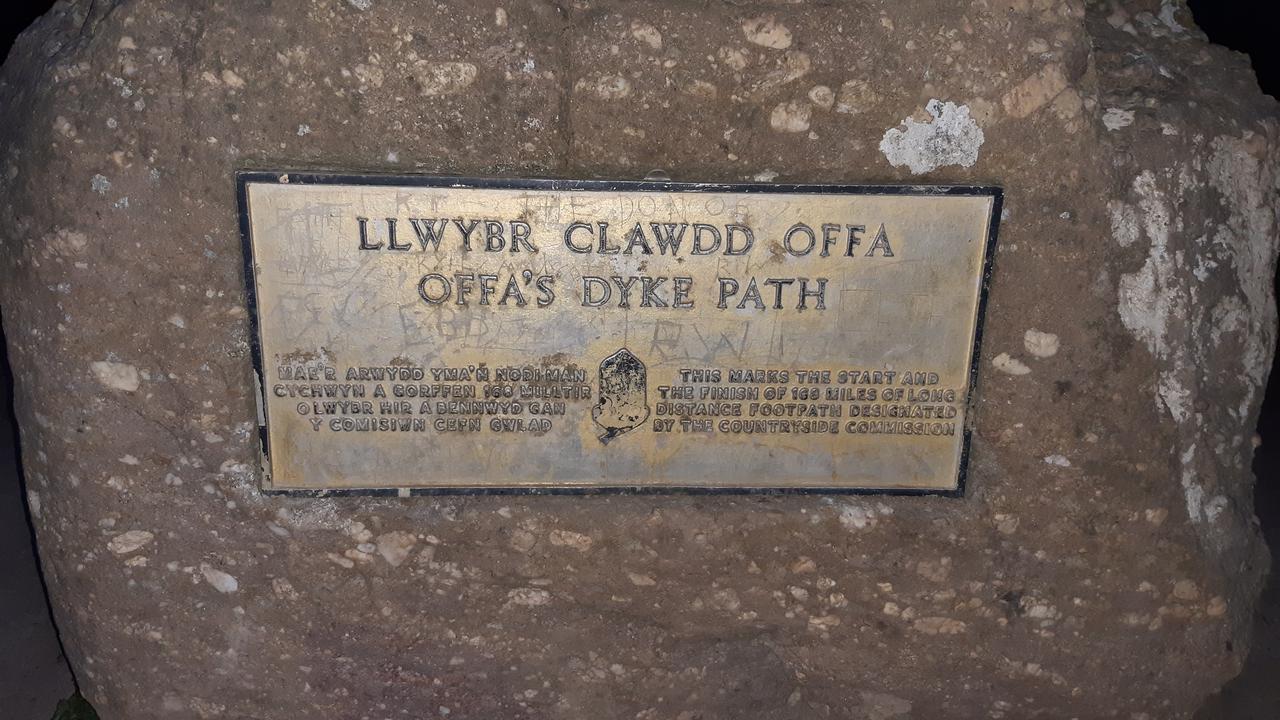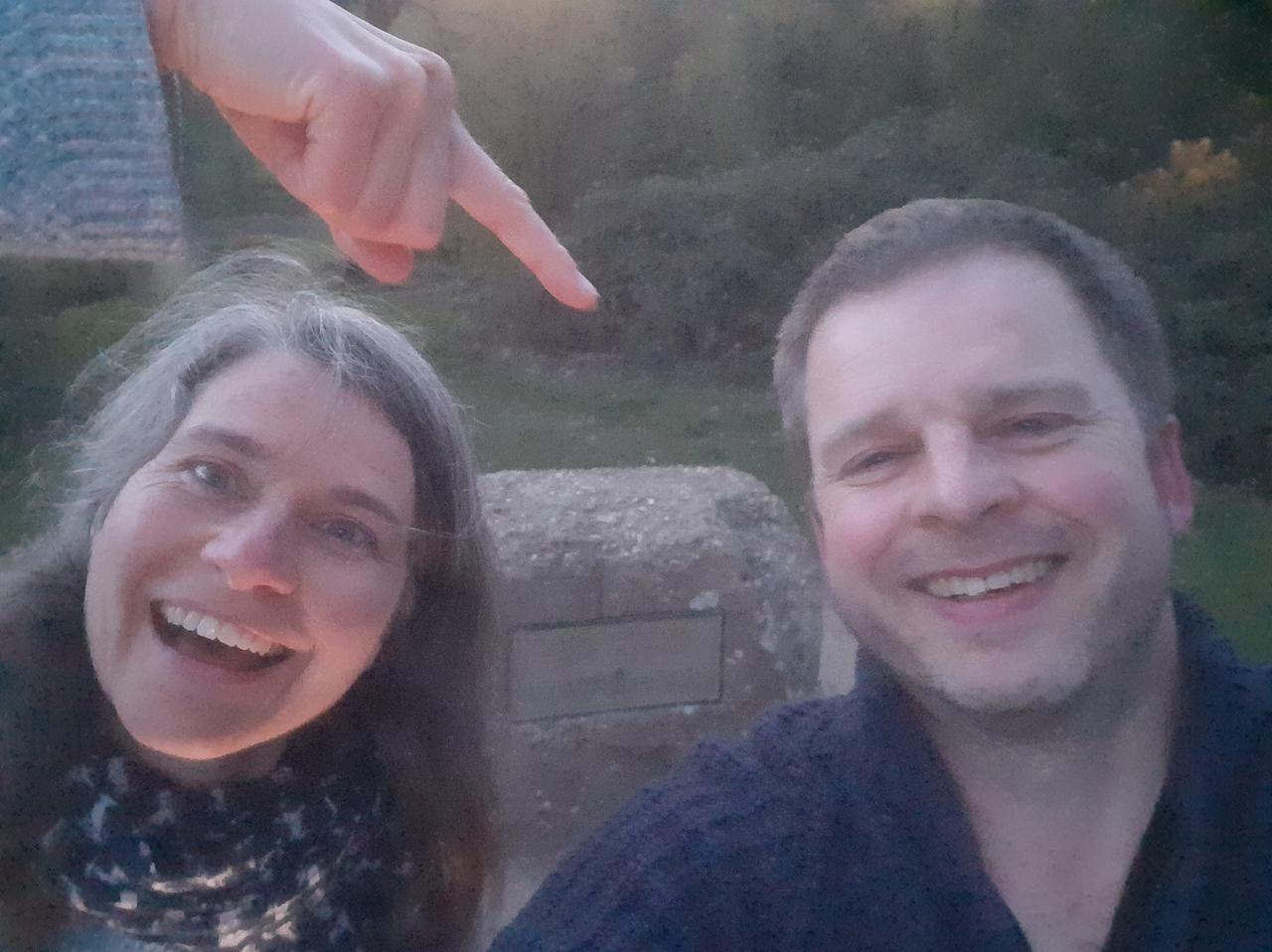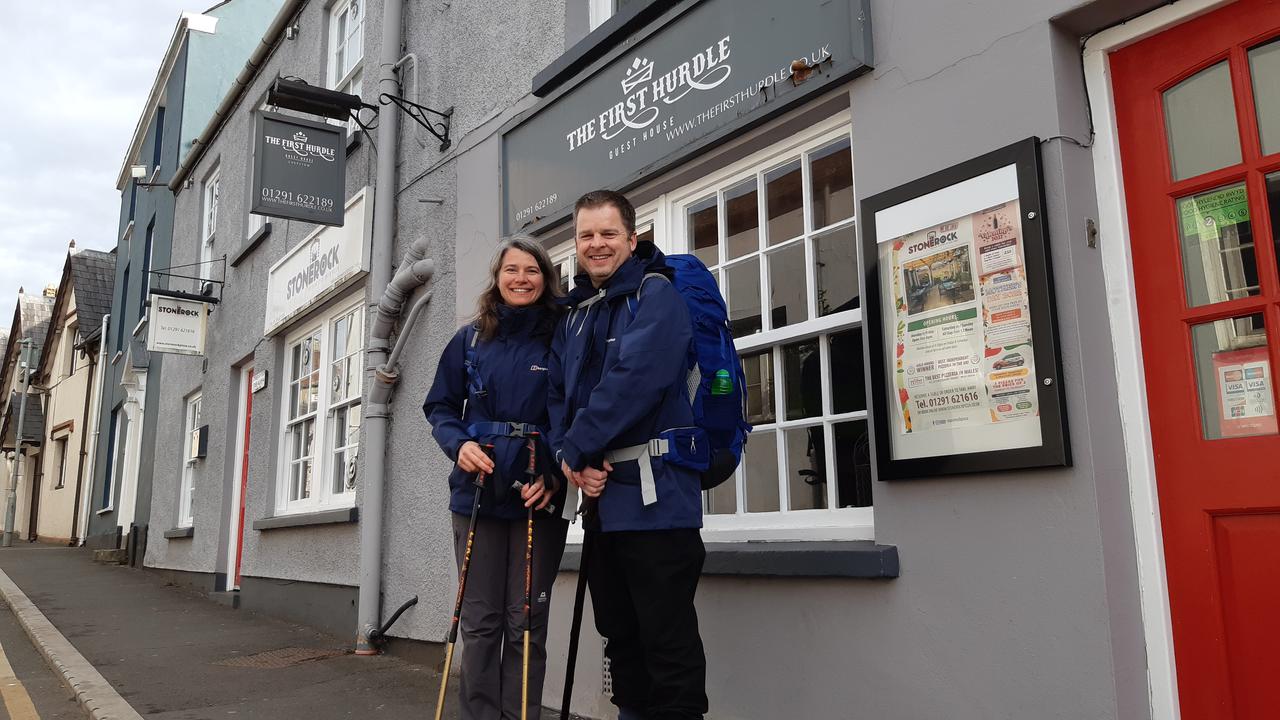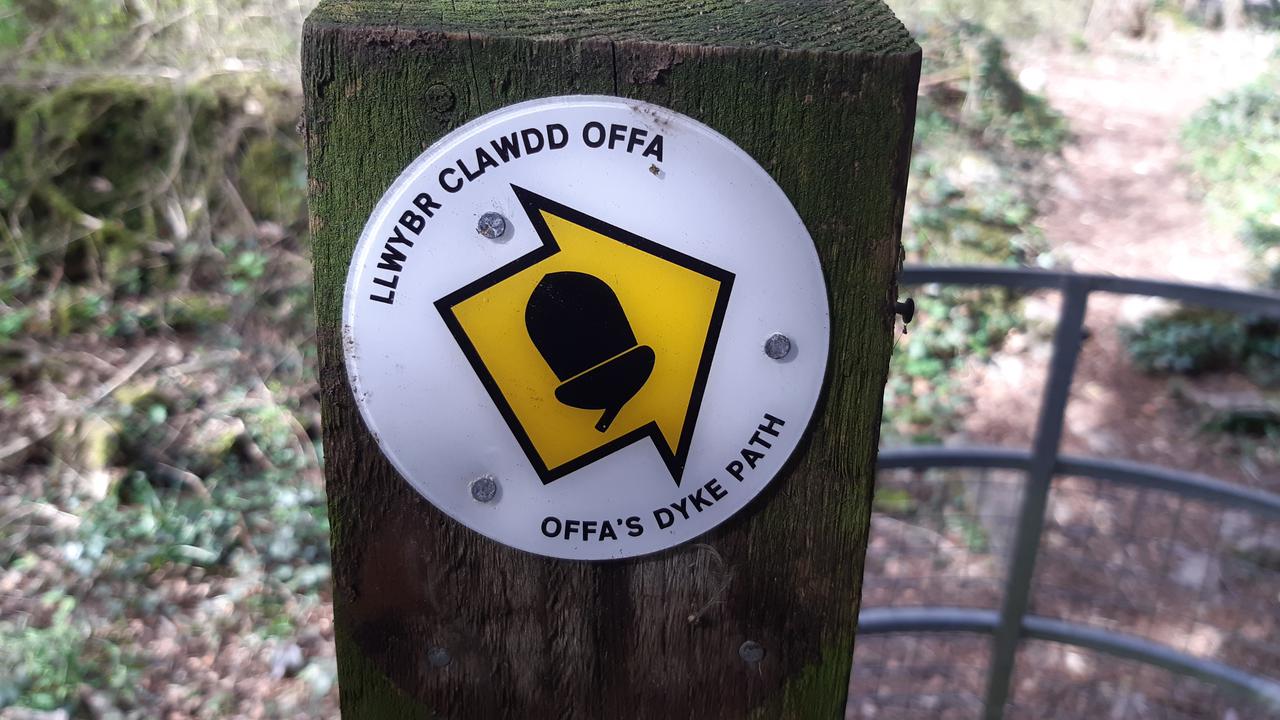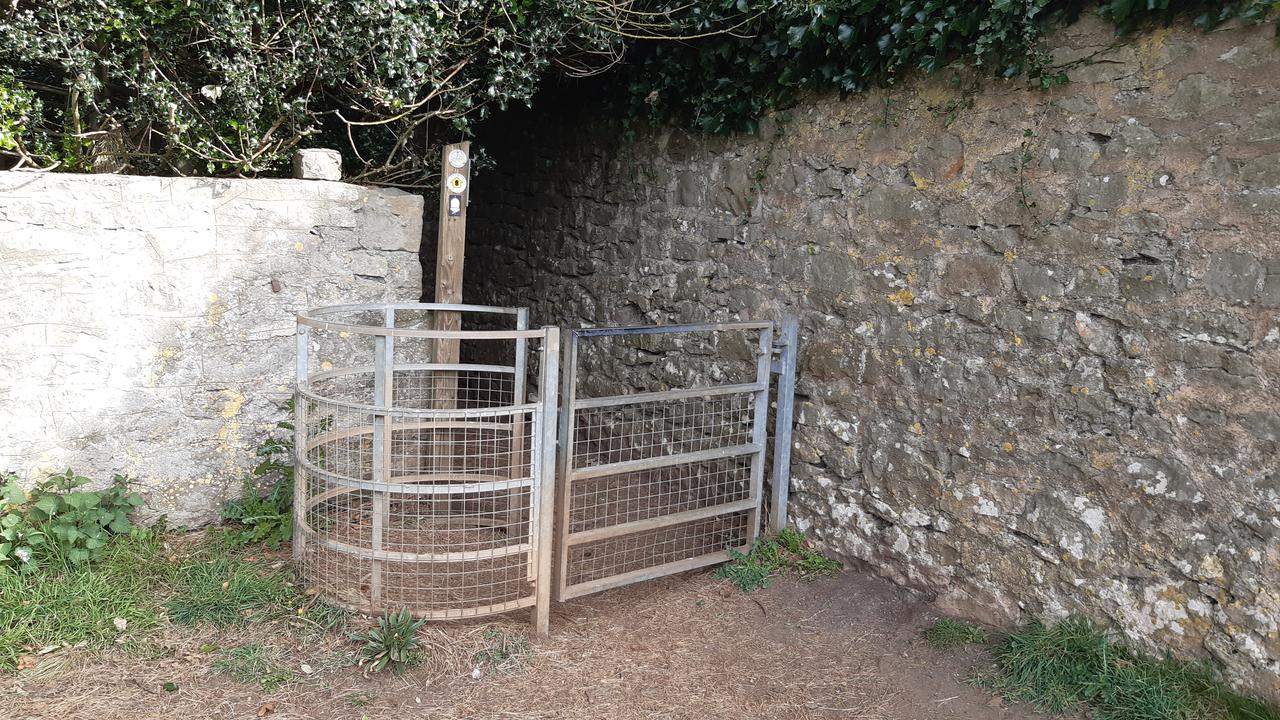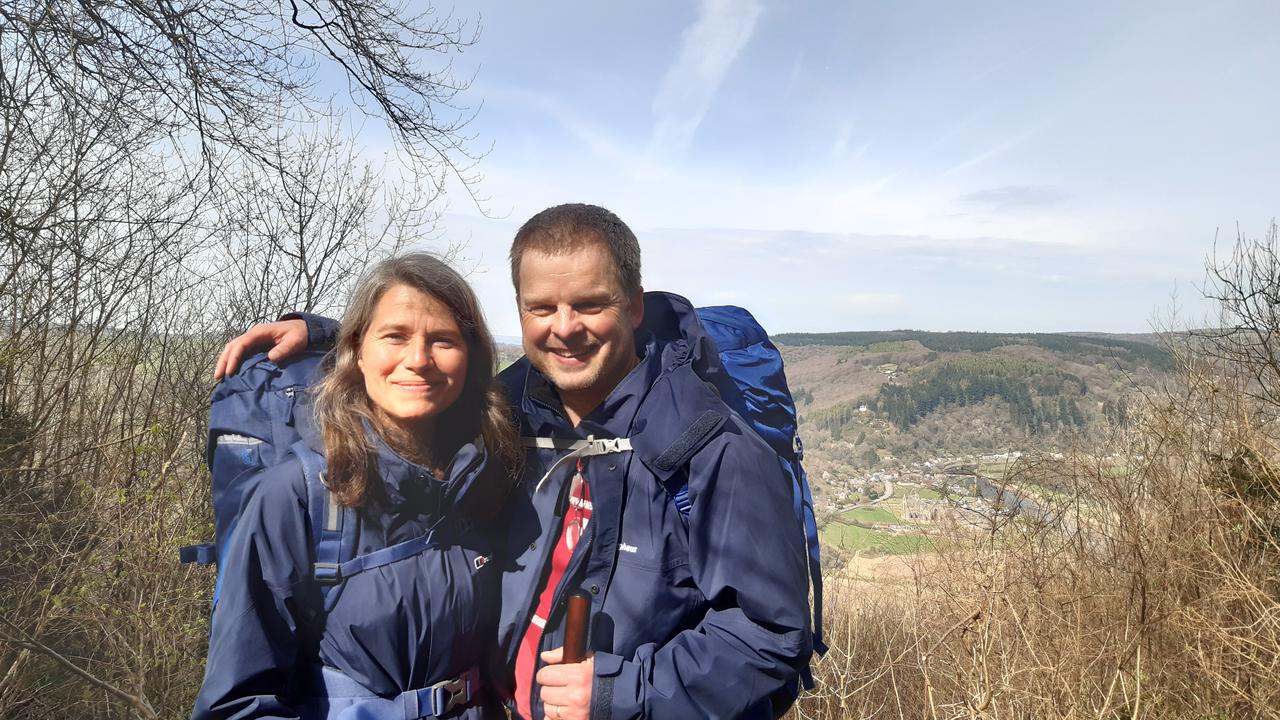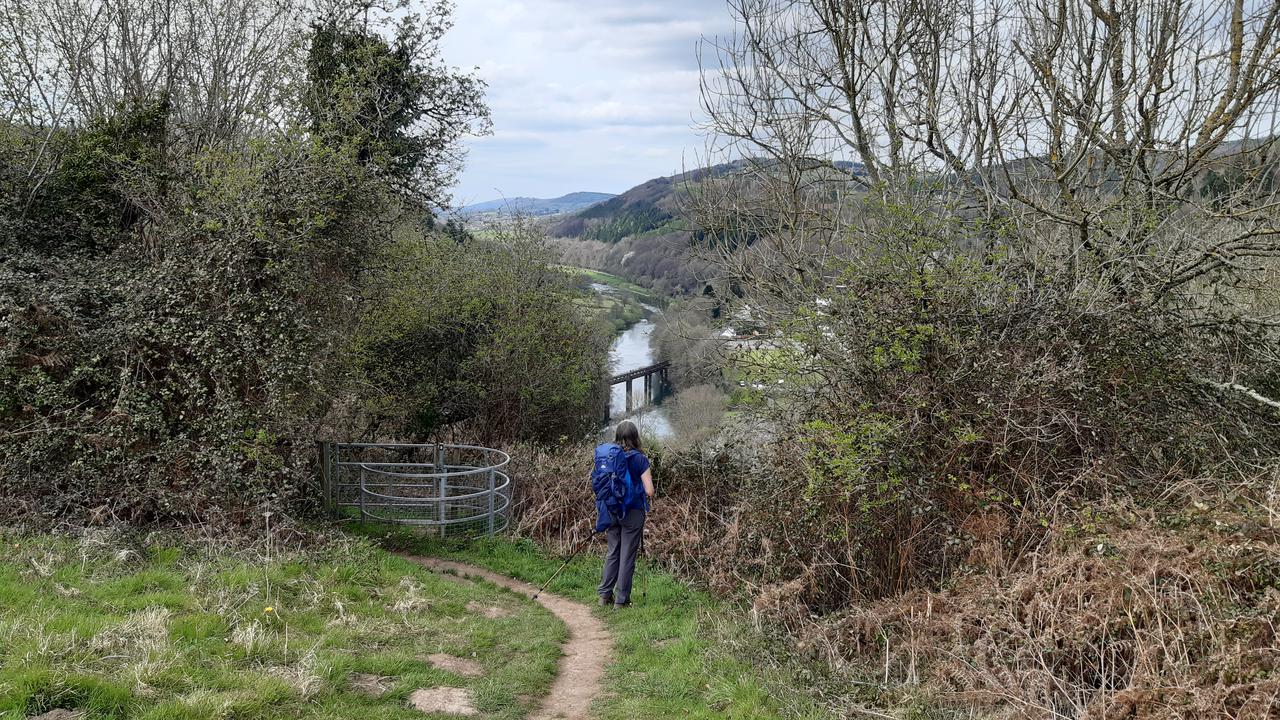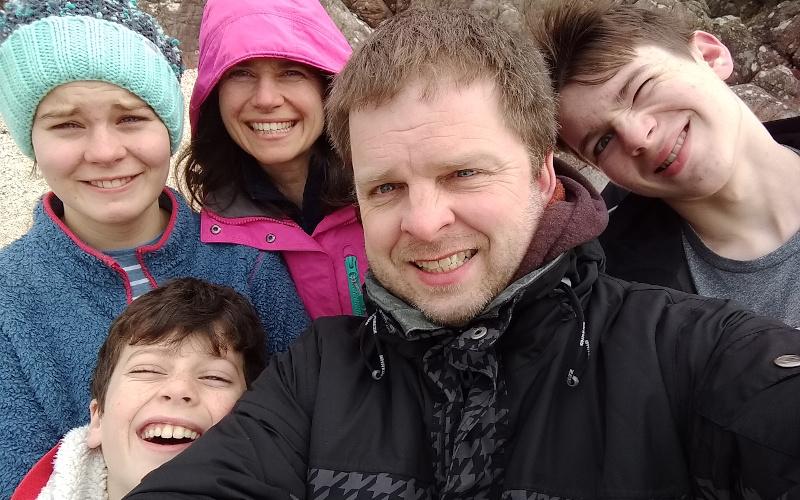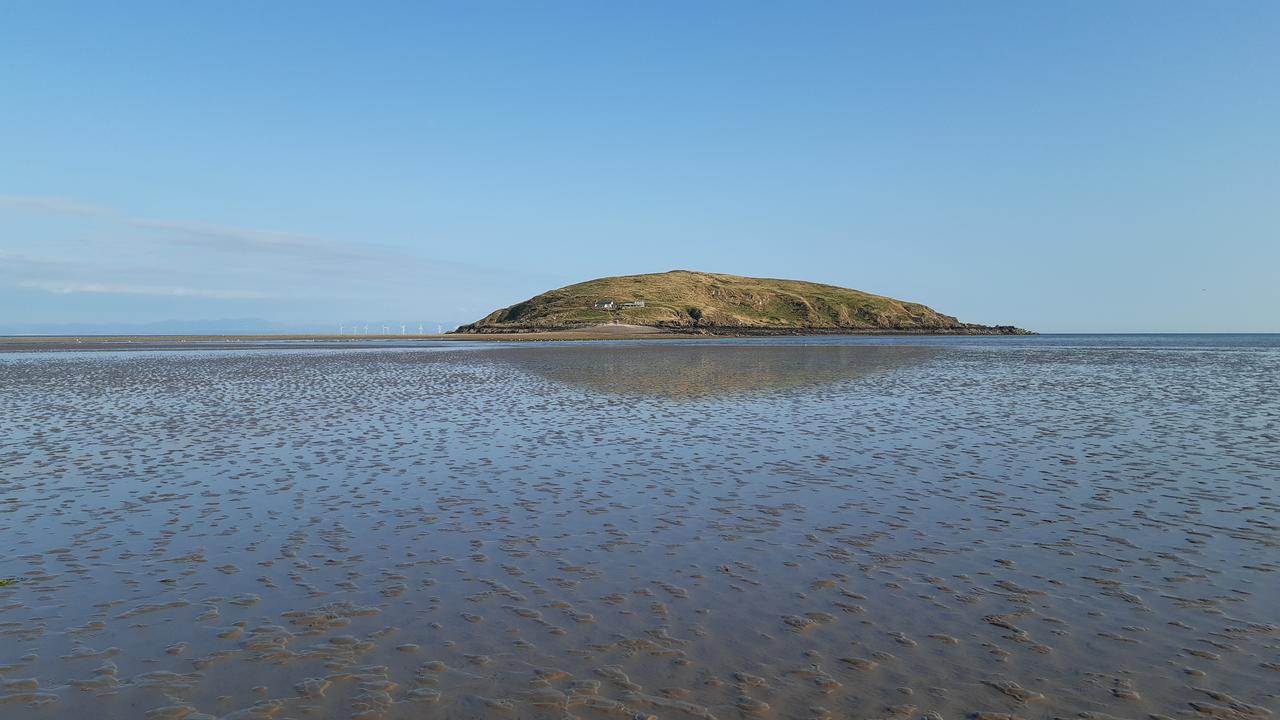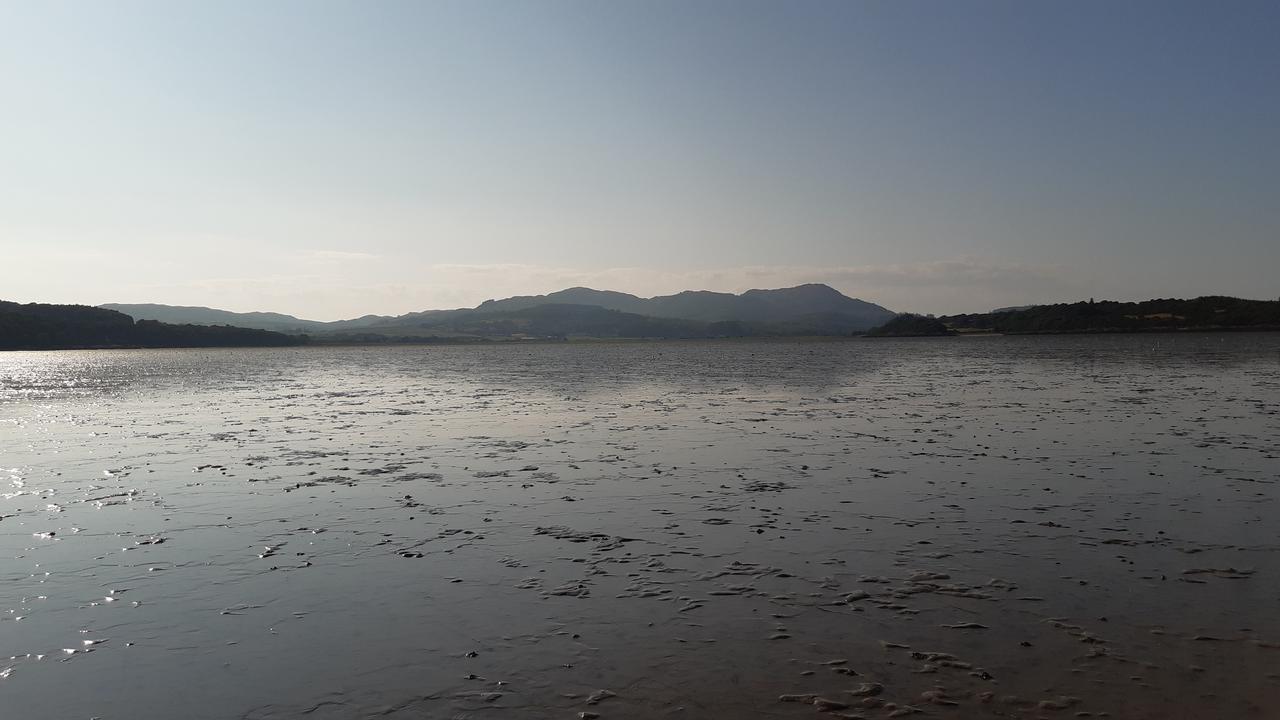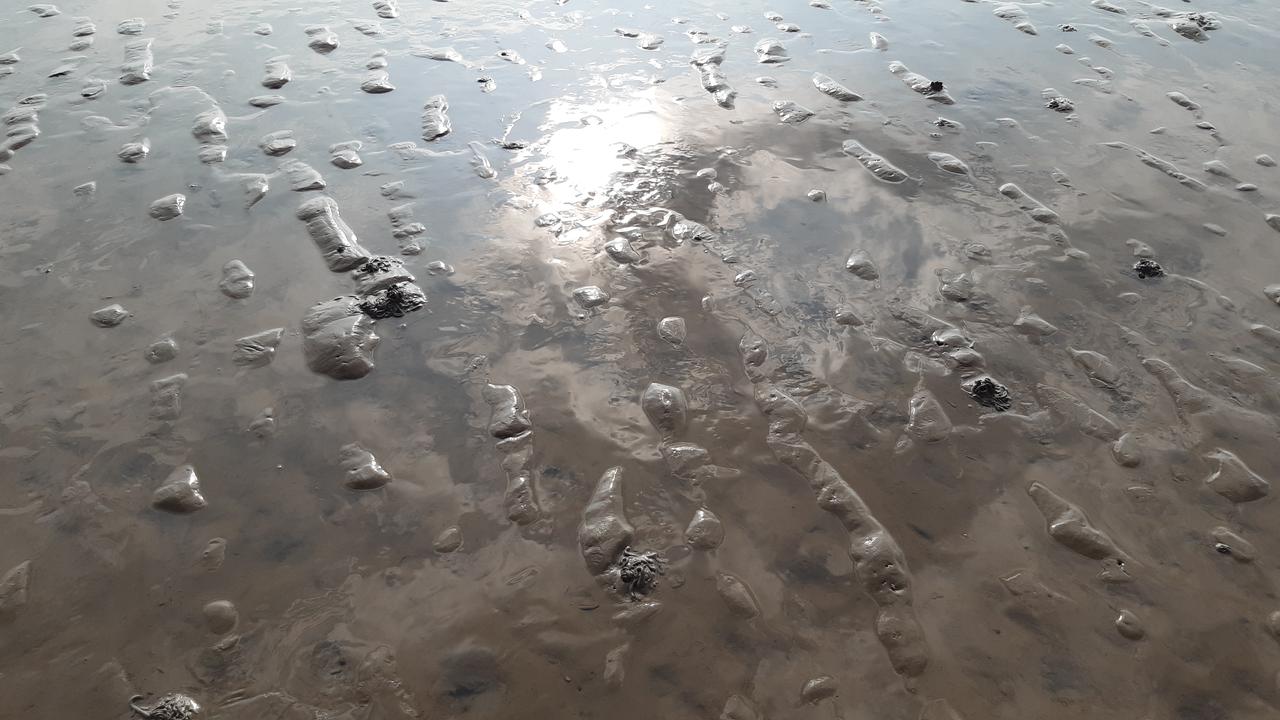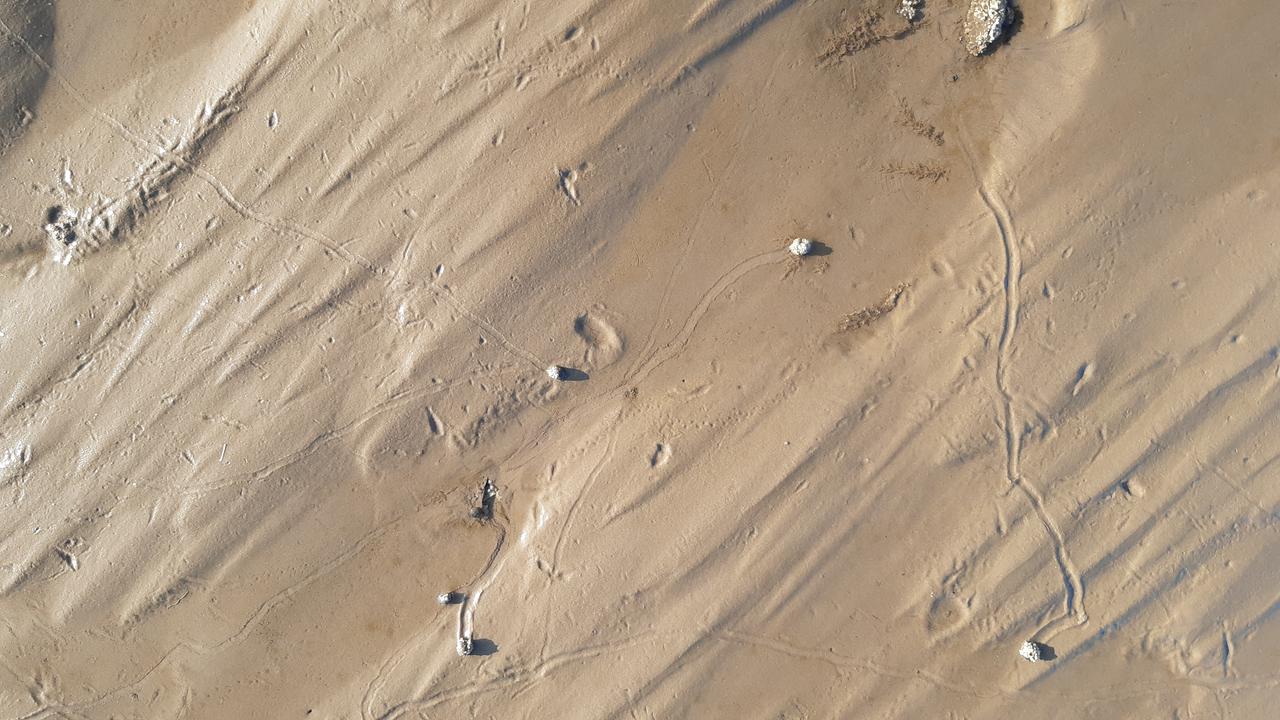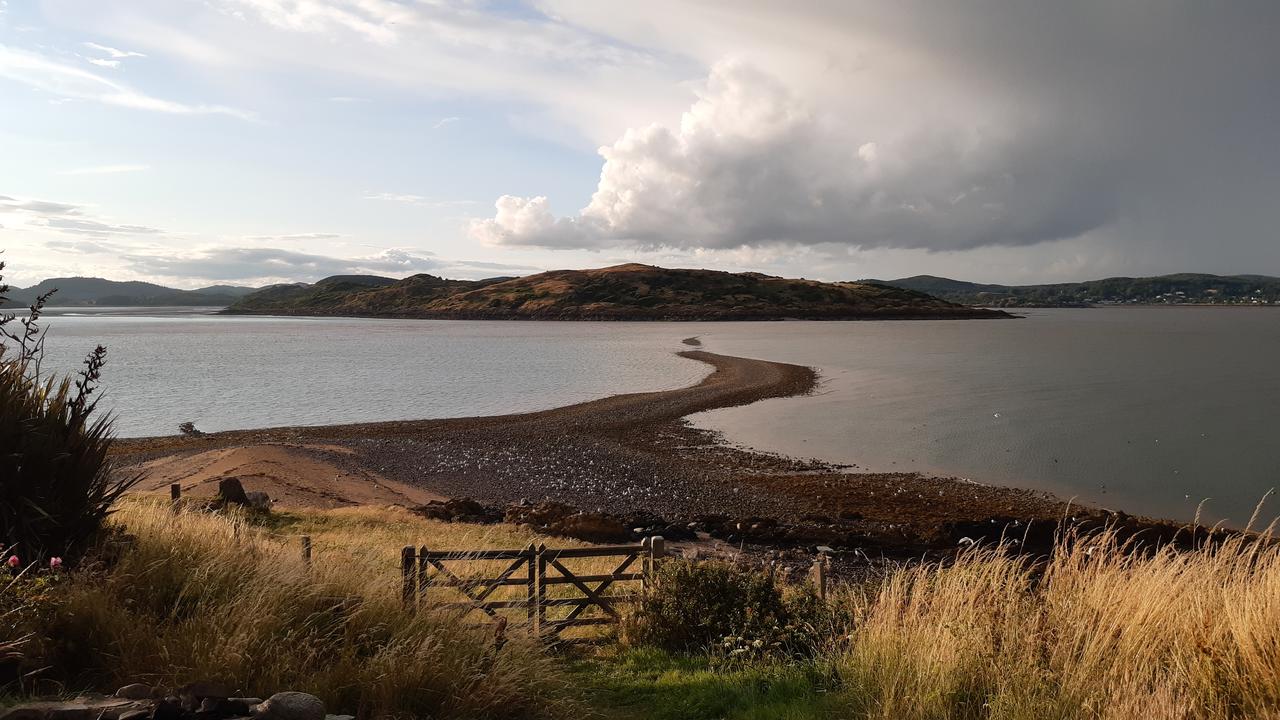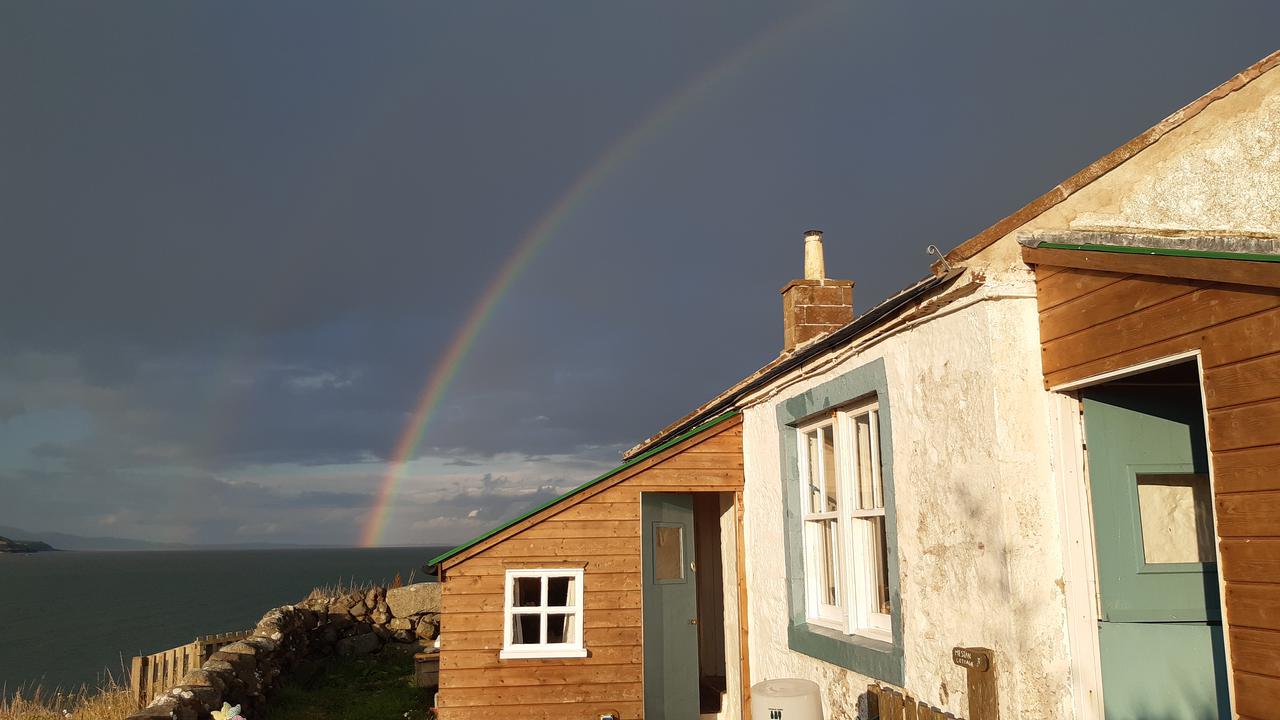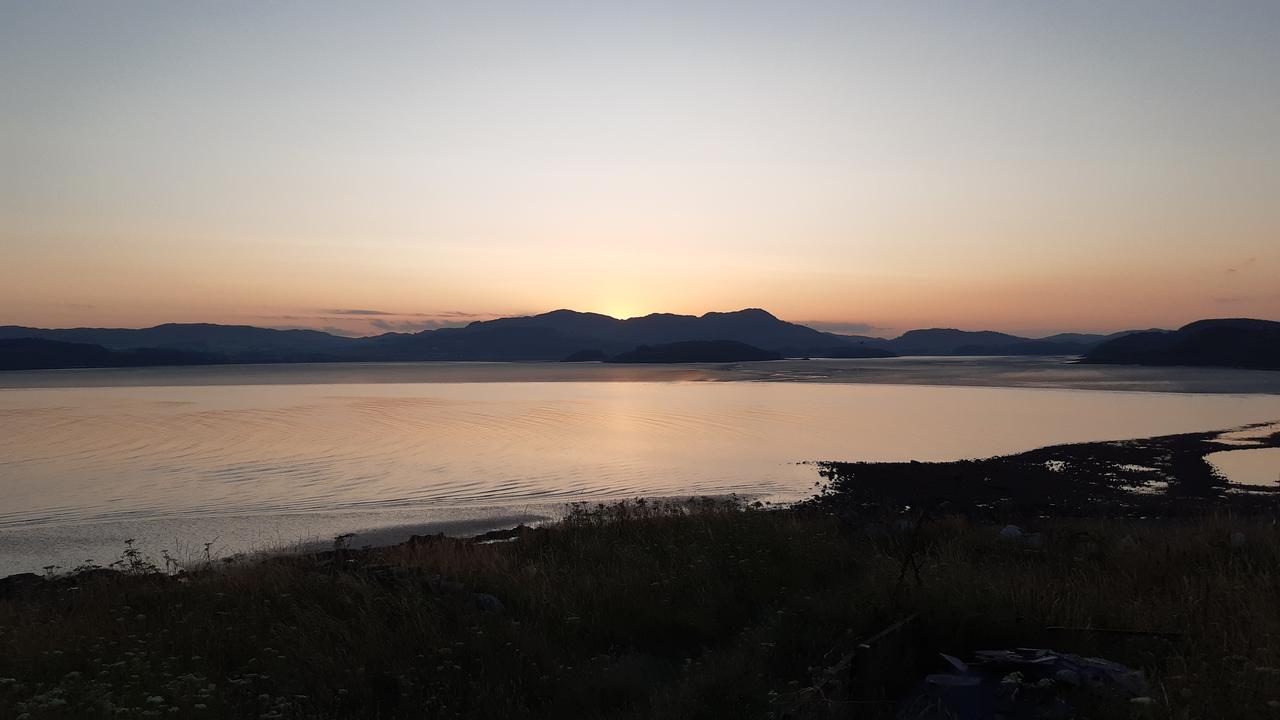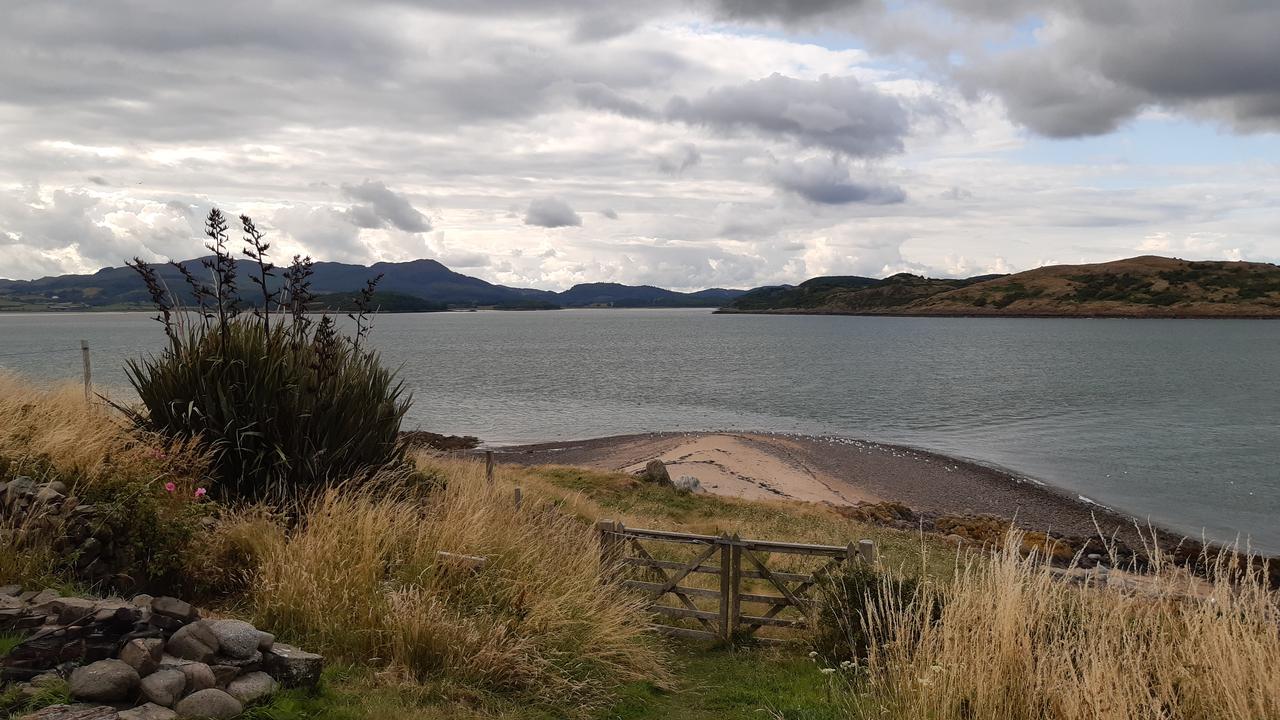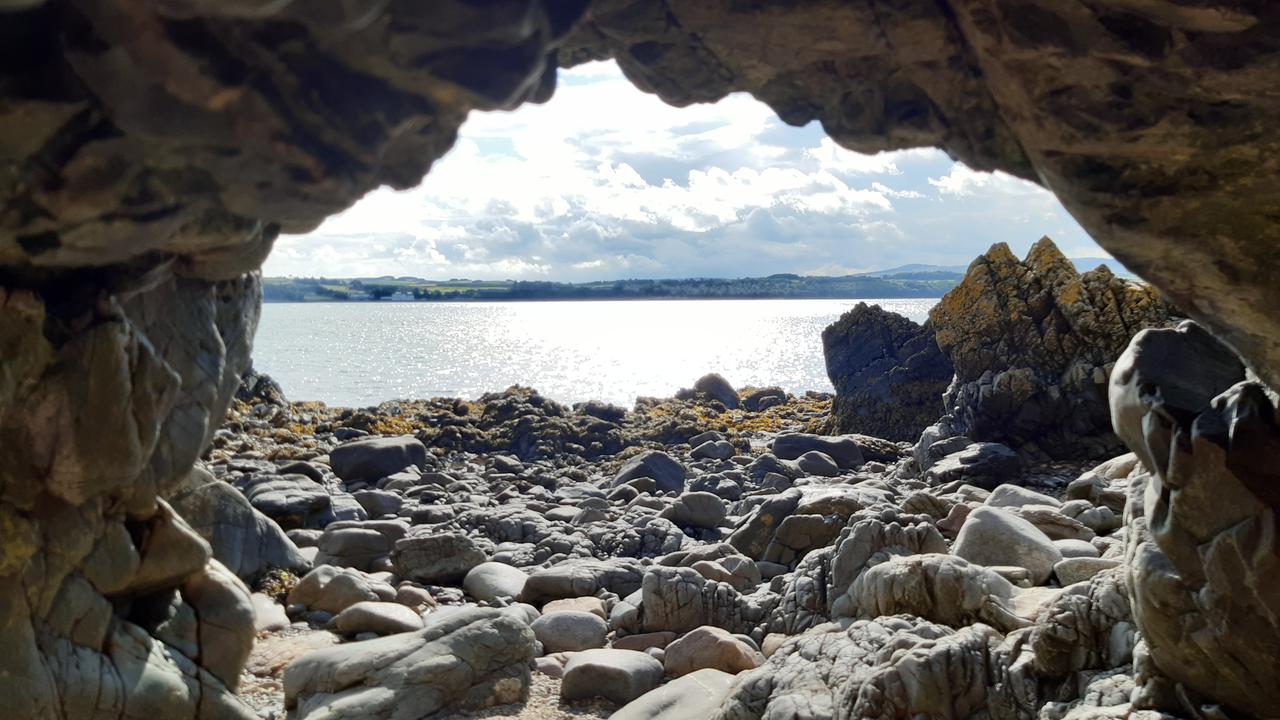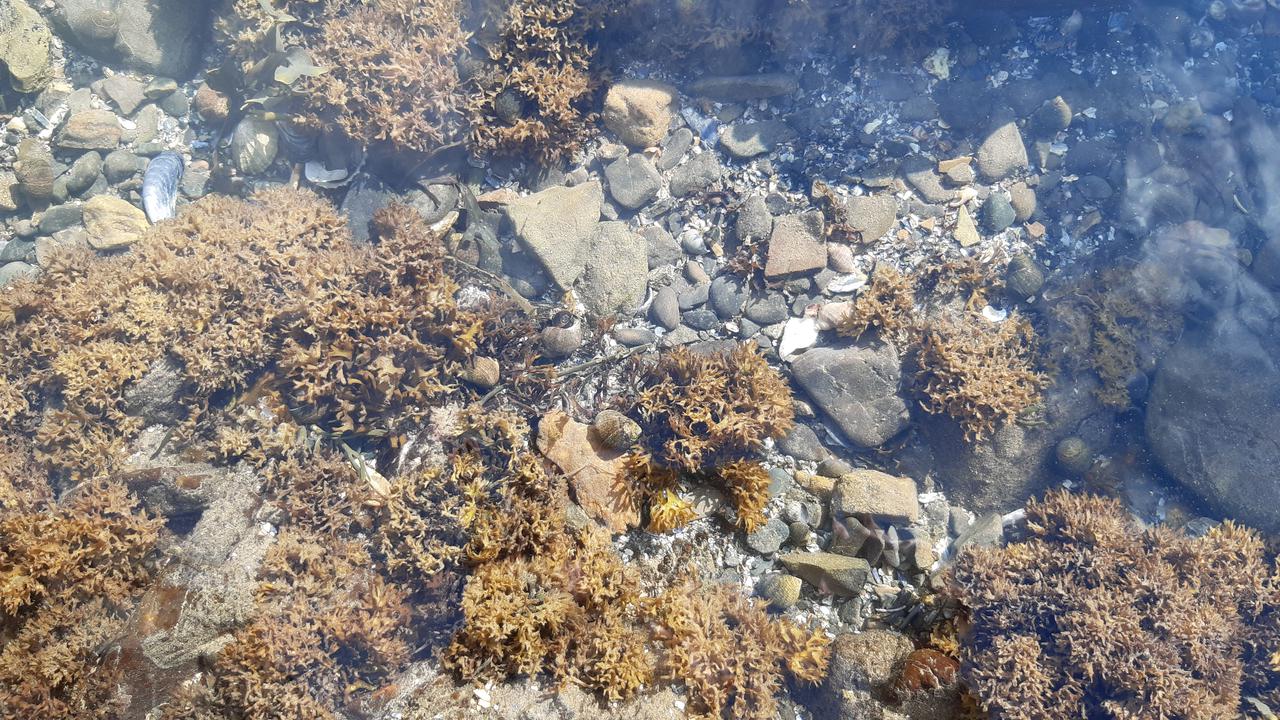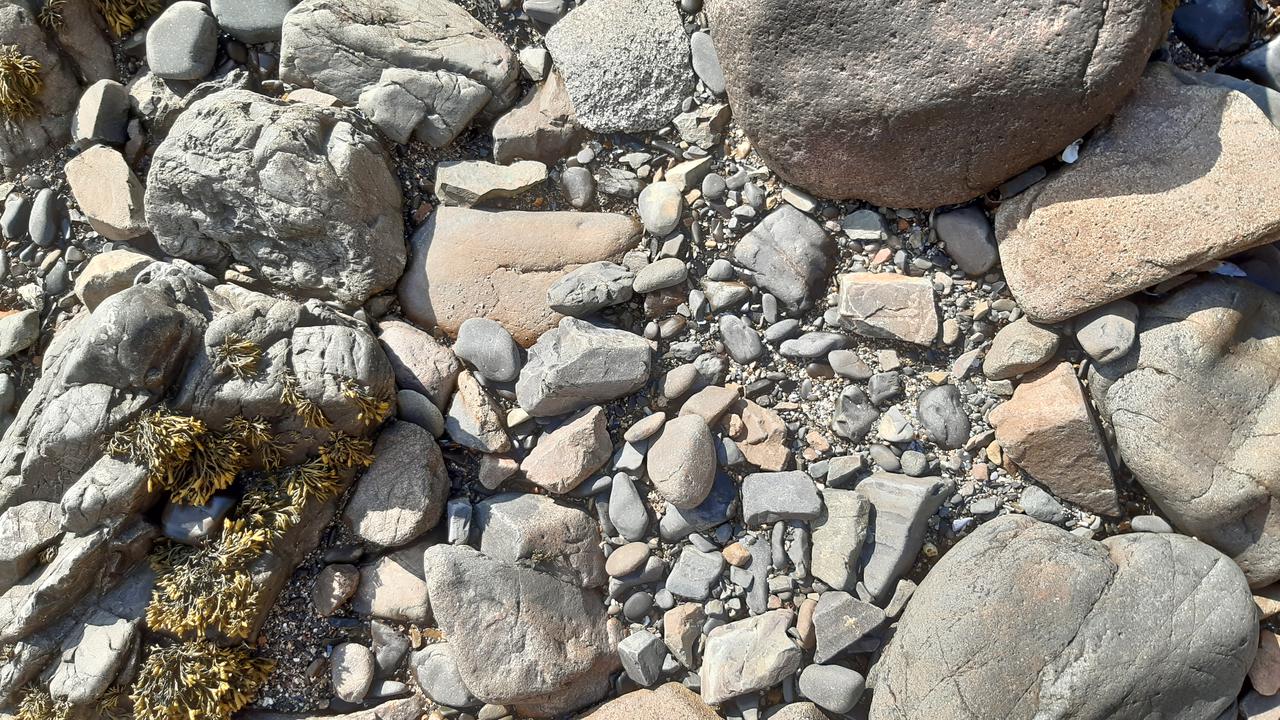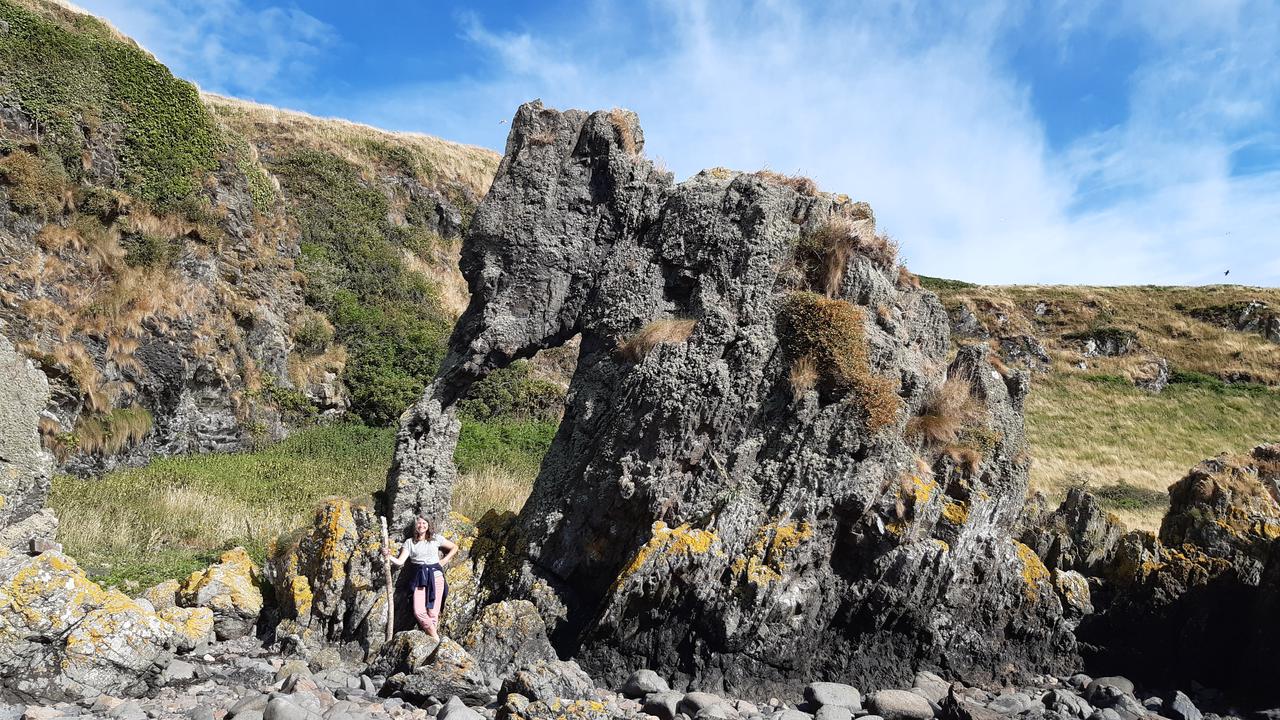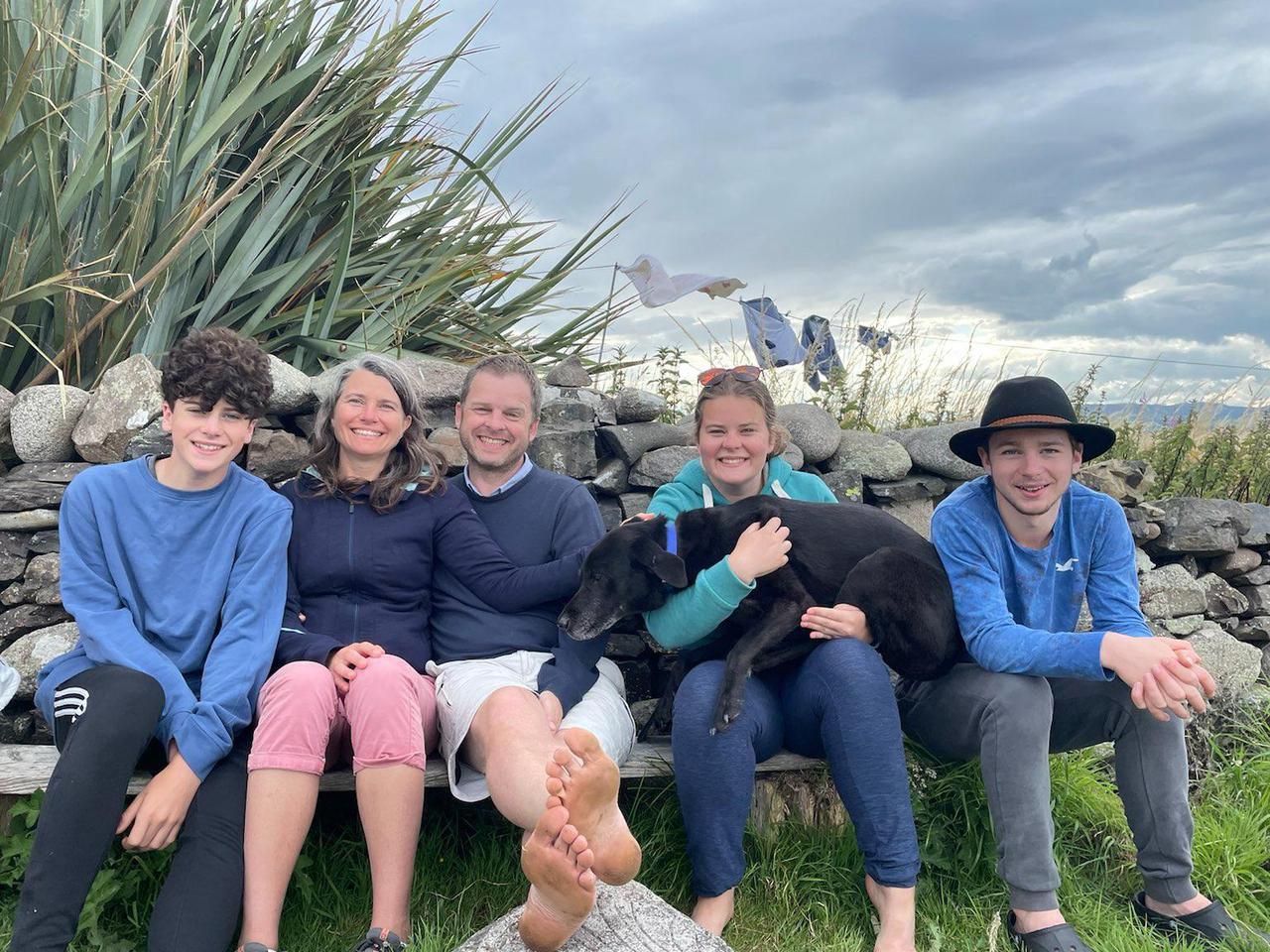Offa's Dyke - Day 2:
Music is a gift and it's a privilege to listen to highly skilled and engaging musicians. We wondered what sort of music might be on at the Queen's Head Inn yesterday evening, and we were pleasantly surprised by the quality, versatility and mellow tones of the unnamed guitarist shown below.
He played a selection of classic pop music, some of his own compositions and plenty of folk music. At the end he was joined by two others, a mandolin player (a mandolinian?) and a soprano saxophonist (who confirmed that the only difference between a lawn mower and a saxophone, is the fingering). Actually, joking aside, the sax player was quite virtuosic. ;-)
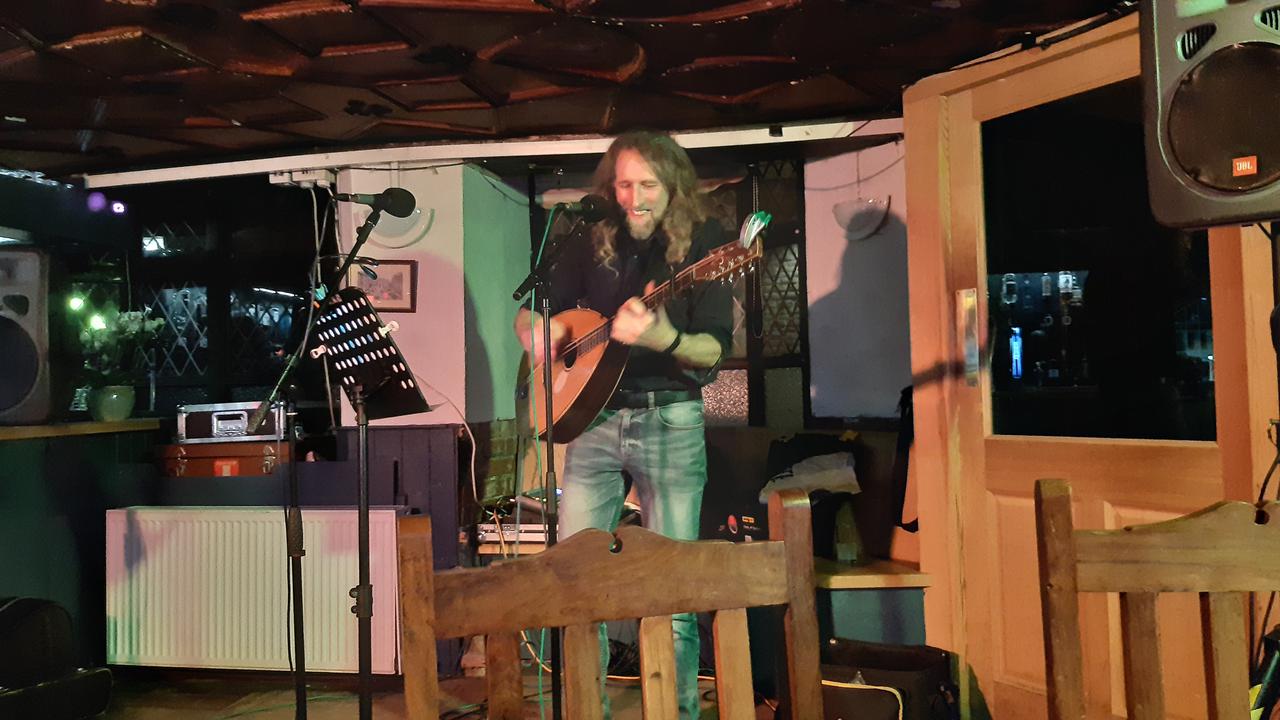
We had an unplanned and unexpectedly lovely evening just sitting back and letting someone else perform a set of toe tapping music in such a friendly and warm atmosphere (the locals were all pleased to make our acquaintance).
After a continental breakfast, at which Neil gave us advice about the next pub at which to eat (and his advice about yesterday evening's Italian restaurant was spot on), we packed our bags and headed for the high street to stock up on picnic supplies. As a result, we were relatively late setting off from Monmouth at 9:30am.
Clearly, we arrived yesterday by the more welcoming direction of travel. Because, here's a photo of the Welsh facing gate house / toll booth / fortified bridge out of which Mary and I left the town.
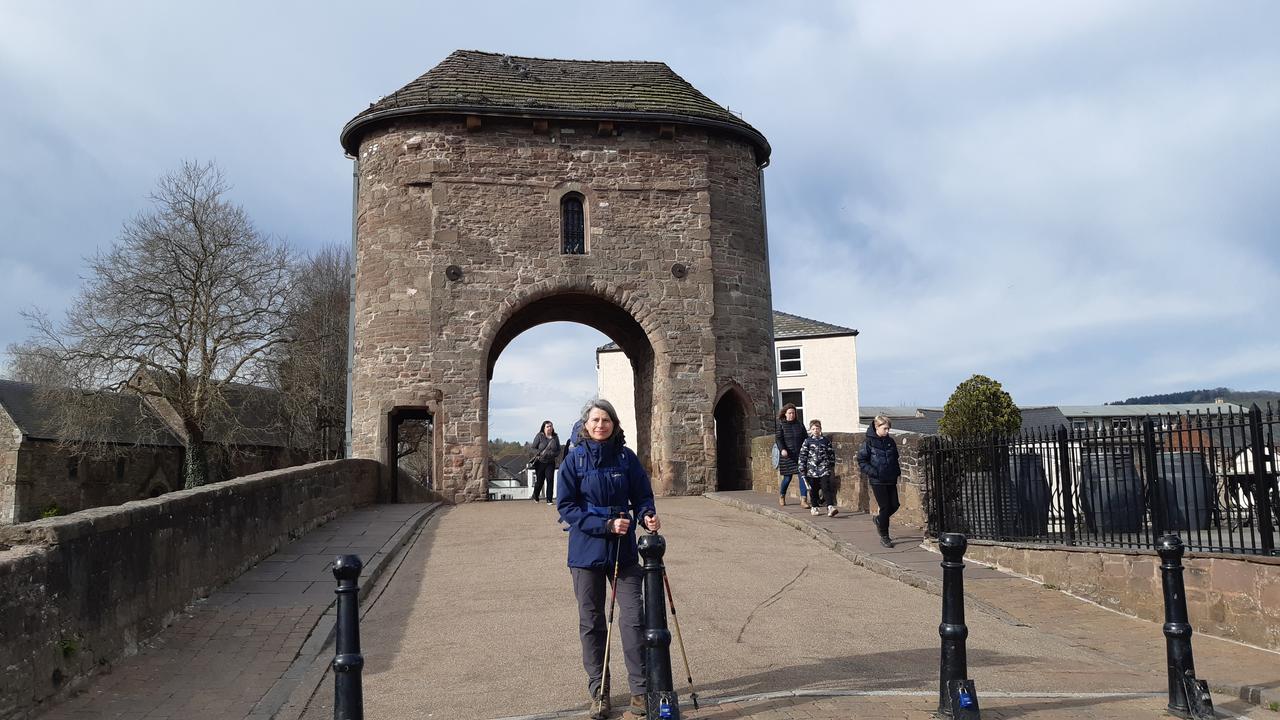
A few miles out of Monmouth were some wooded hills. This, I thought to myself, would be a repeat of yesterday's wonderful forest walking: at the foot of the hill I heard a woodpecker and the birds were singing fortissimo con animato. Here's a recording of the ambient sounds of the woods at the foot of the hills... including the odd tapping noise of the distant woodpecker.
I also took this photo immediately after making the audio recording and have decided to name this place "woodpecker grove".
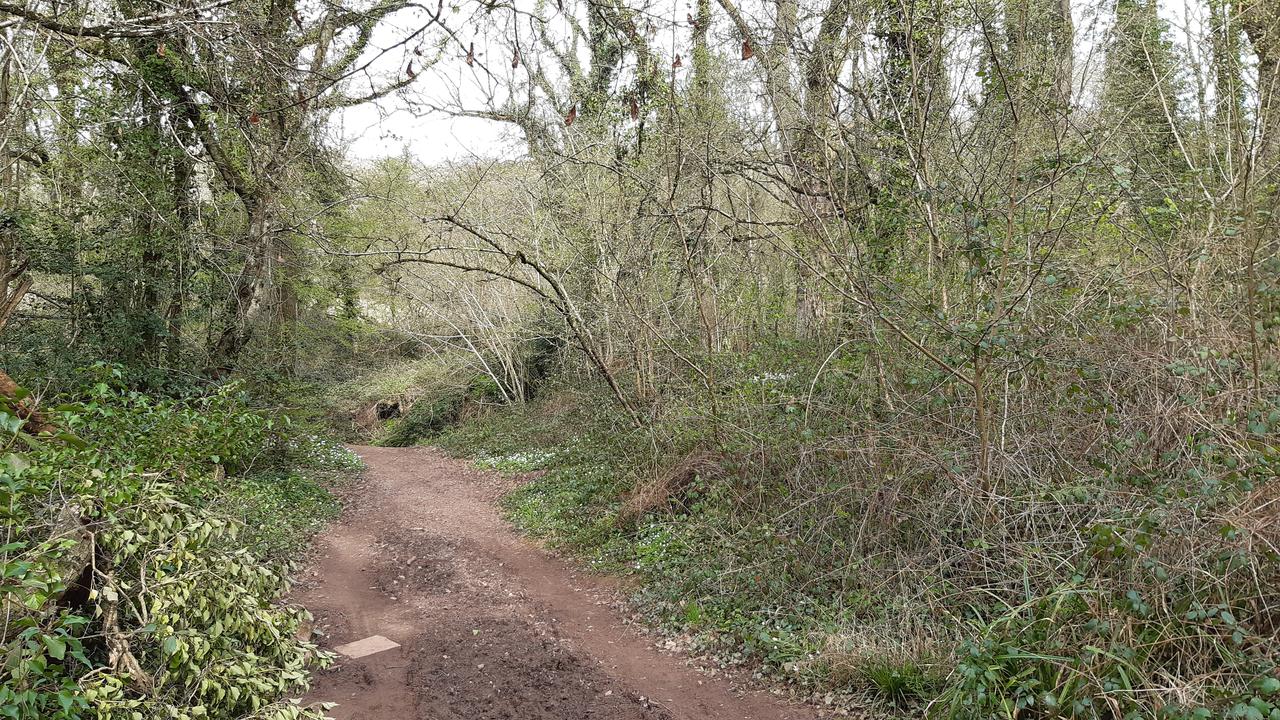
However, the hills took a sharp turn in an upwards direction (as hills are wont to do). It's not so much that the hills were huge, it was just that conditions under foot were very bad and the path was exceptionally steep. Also, at this point early in the walk, my boots and ankles had a disagreement and I'm afraid I suffered the painful consequences. Honestly, how Mary put up with the constant irritated chuntering coming from my direction, like the sound of a grumpy steam locomotive, I will never know. But she did, and I was glad she did, because that steep incline was a struggle for all the wrong reasons.
Yet, despite the pain, difficulty under foot and exceptional effort needed to climb up the steep inclines, we eventually reached the top... as Mary kept insisting we would.
We met a family resting on the bench, who made encouraging sounds about it being downhill all the way out of the forest from this point on. We suspected they were being generous with their encouragement, especially given all the "bloody backpack" type comments coming from my direction.
This was not, actually, the first time we had encouragement on our walk. Yesterday evening, just as we were walking over the welcoming, less fortified bridge into Monmouth, a woman drove past, wound down her window and shouted at Mary, "you go girl!". At that point in the day, Mary probably had a grim look of determination on her face as the hotel was in sight.
In any case, our downward route was a mixed experience. Mary's knees decided to complain, yet we found ourselves surrounded by flowers, the forest and the sounds of nature. Mary's knees also encouraged us to make many stops to make a closer examination of the flora and fauna we might see. This common dog violet being a prime example of Mary's knees' keen interest in nature.

After the ups and downs (literally) of exploring the wooded hills, we felt we deserved elevenses. And so, once we found a suitable spot (perching on a bridge over a stream) we soon made short work of some banana Soreen bars.
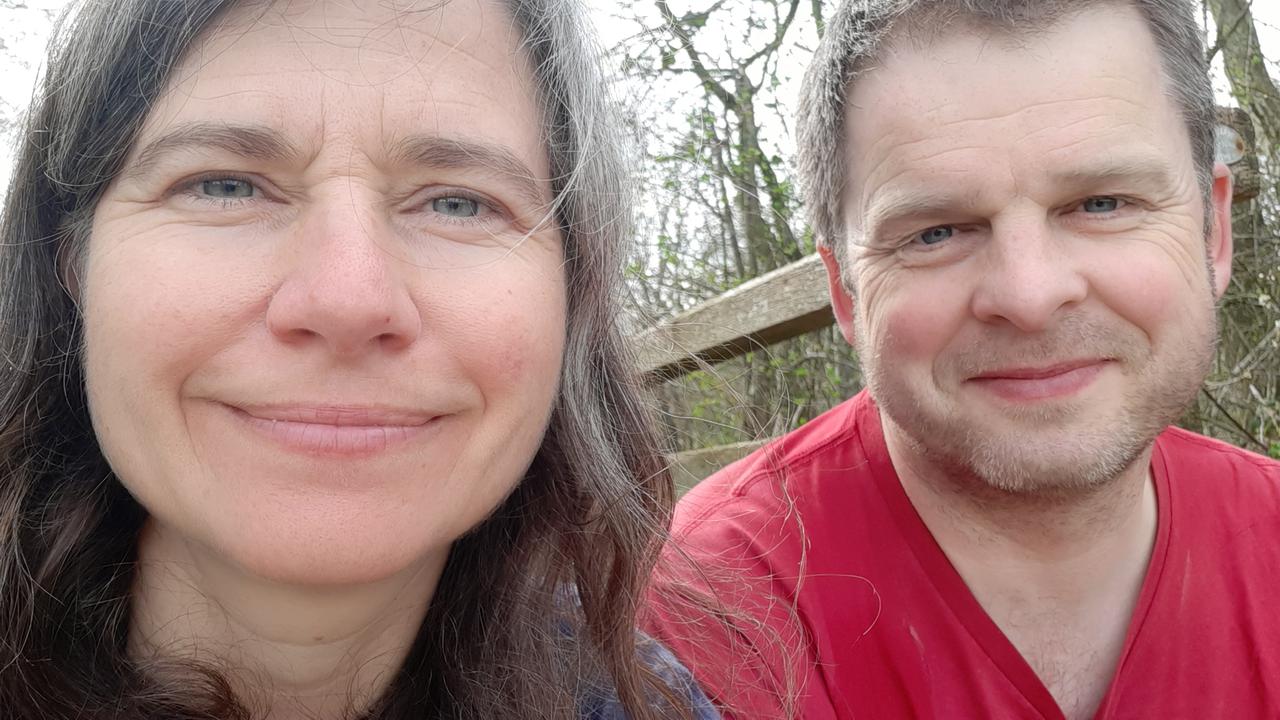
Suitably fuelled up, we pressed on over the rolling countryside (or, as Neil at the Queen's Head described it, gently undulating farmland) and made good progress. Especially now that I had intervened in the argument between my boots and ankles. A quick examination of the lacing situation caused me to reconsider my options. I realised that the boots were simply too helpful in offering unneeded support for my ankles. So I just ignored a bunch of hooks on my boots, that seemed to be causing my discomfort, much to the relief of my ankles.
Our lunchtime picnic was in the middle of a wonderfully tranquil orchard. We sat down, took off our boots and just let ourselves relax into the grass. It was lovely.

Getting up a head of steam after lunch took a bit of time, but we managed it. We also encountered some hills that were less inclined to incline, if you see what I mean. Actually, they were not too much of a challenge to walk and I, true to form, fell into my habit of stomping allegro con brio up such hills as I found my rhythm. Mary has had to deal with such an enthusiastic response to hills for over 25 years, and can usually be found a little way behind me insisting that I slow down and take in the views, dammit.
This photo, is a case in point:
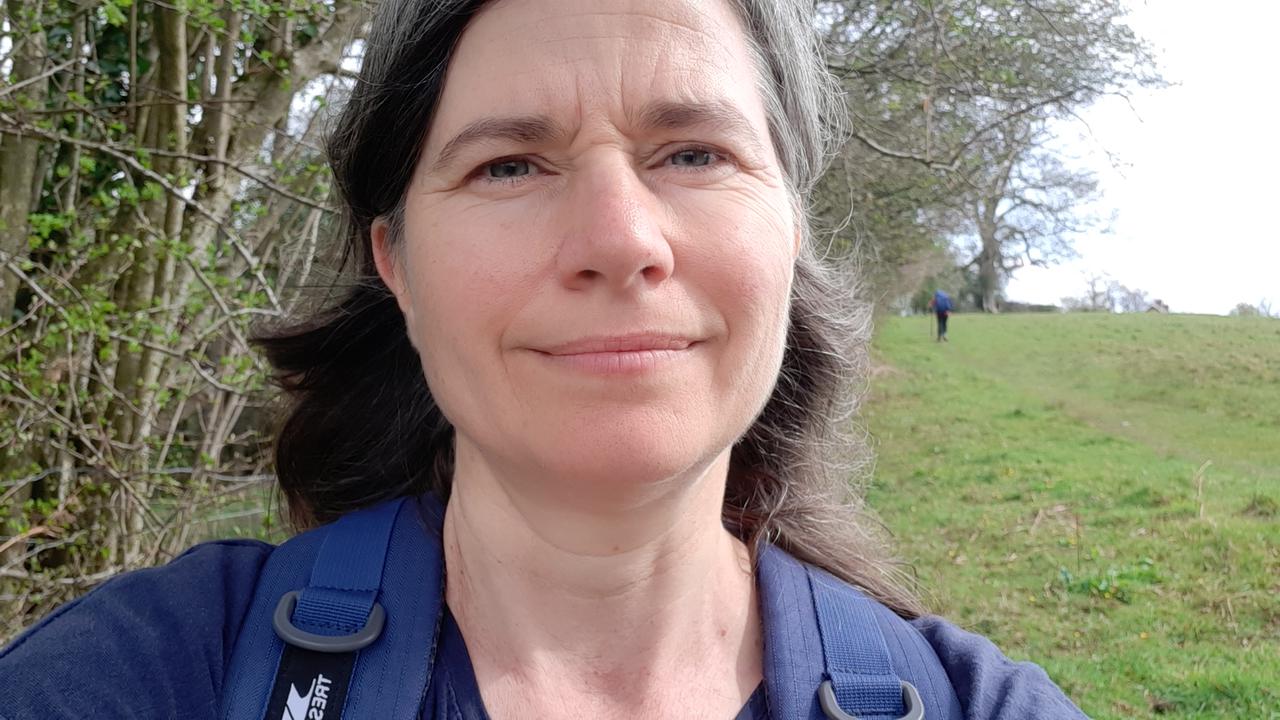
Once again, we lamented the various aches and pains we were coming to know and love. For both of us, mid-afternoon, these took the form of the first, dreaded, blisters. Yet we pushed on through, despite an enforced detour due to an unsafe bridge that took us off the Offa's Dyke route. This took us through several flocks of unamused sheep and lambs. Mary reckons we added at least another couple of miles to our (14.5 mile) route. I think that's the blisters talking!
Eventually, we rejoined the route and could see our destination ahead with tomorrow's challenge, the Brecon Beacons, on the horizon. It was at this point we realised there had only been four kissing gates on today's route.
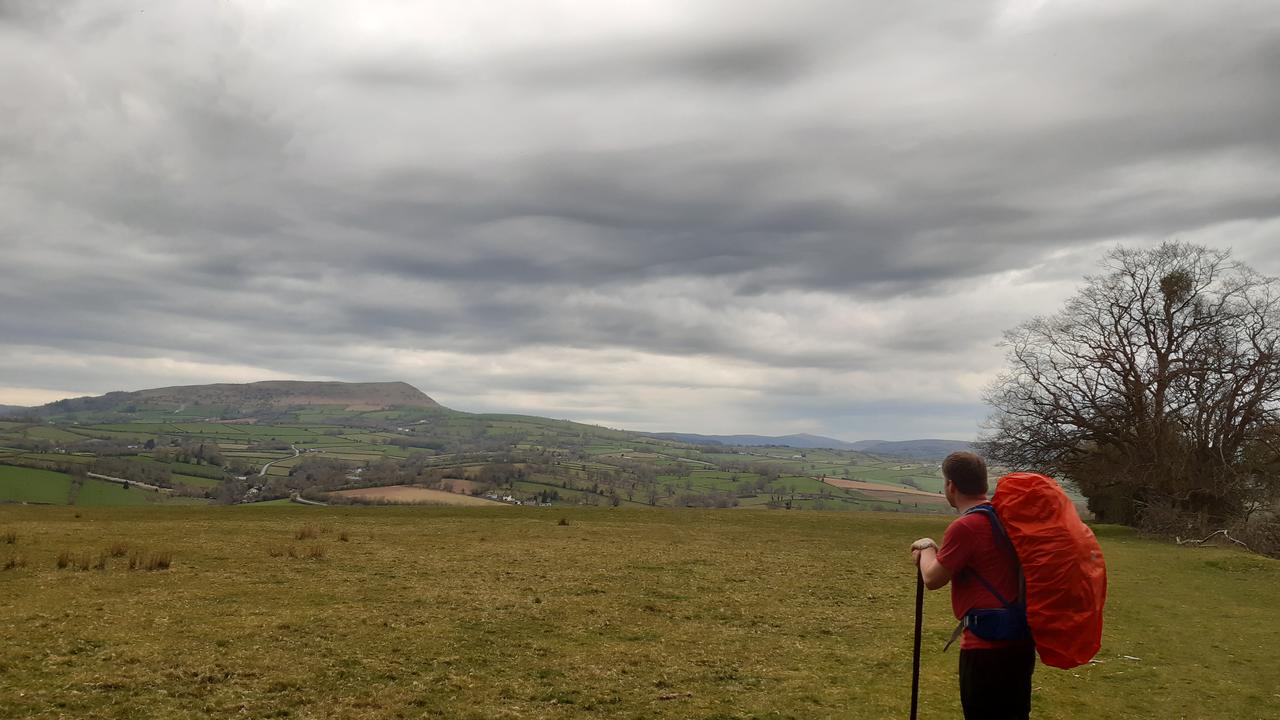
This evening, we have a meal booked at a recommended pub. In fact, it's the only damn pub for miles and miles. Let's see if they've even heard of vegetarians in this part of Wales.
Tomorrow will be a challenging day. It's going to rain, both of us have blisters, and it's going to be tough walking up and over the Black Mountains towards Hay on Wye.
Even the name sounds ominous... surely the Black Mountains belong in Mordor..?
Mary put a positive spin on things: at least we get to try out our new waterproof trousers.
Onwards!
